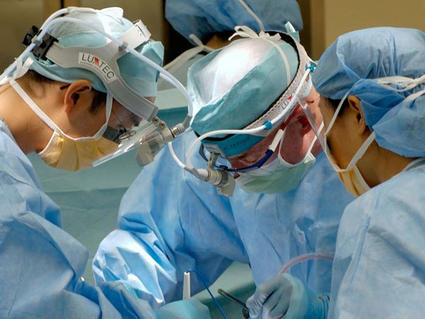Calculator of Colorectal Cancer Cure Probability
This calculator was developed by Eric A. Engels, M.D., M.P.H., Branch Director, Infections and Immunoepidemiology Branch, and colleagues in the Biostatistics Branch, for use by health professionals to estimate the probability that a patient with colorectal cancer is cured of their cancer. The cure probability may be useful for counseling patients and clinical decision-making.
About the Calculator
What is the Cure Probability?
For a population of cancer patients, the cure probability is the proportion of people who will not die from their cancer. For an individual patient, the cure probability is a measure of prognosis and ranges from 0 (i.e., 0% for people who are not cured from their cancer and will eventually die from their cancer) to 1 (i.e., 100% for people who are cured from their cancer and will never die from it), with intermediate values reflecting the likelihood that a person is in the cured group. The cure probability increases with longer time since cancer diagnosis, as the patients who are destined to die from their cancer are removed from the population and those who remain alive have a better prognosis.
Why is the Cure Probability Useful?
The cure probability estimate offers prognostic information that may be helpful for counseling or clinical decision-making in a variety of scenarios.
One possible application is for deciding when it is safe to offer solid organ transplantation. Solid organ transplantation can enable long-term survival for patients with end-stage organ disease. However, the decision regarding whether a patient can be safely placed on the organ transplant waitlist accounts for comorbid medical conditions that would make transplantation high-risk or of limited benefit to the patient. For patients with a history of cancer, such considerations indicate a need to systematically select those individuals for transplantation who have an acceptably low risk of cancer recurrence and death from their cancer. This approach corresponds to identifying patients who have a high likelihood of being cured of their cancer. A cutoff cure probability of at least 0.80 may be reasonable, as this is somewhat analogous to an 80% 5-year cancer survival rate used in some guidelines.1,3
How are Cure Probabilities Estimated?
The cure probabilities provided by this calculator are based on statistical modeling of data from 230,465 patients with colorectal cancer diagnosed during 2004-2015 in the Surveillance, Epidemiology, and End Results (SEER) cancer registries. The information used in the cure probability calculations includes the patient’s sex, age at diagnosis, cancer subsite (proximal colon, distal colon, rectum), cancer stage at diagnosis, and initial cancer treatment (surgery, radiation, chemotherapy).
How Should Cure Probabilities be Interpreted?
The calculator’s estimates utilize cancer registry data on patients with similar clinical presentations and treatment histories, but they are average population-level probabilities that cannot exactly predict outcomes for an individual patient. Clinicians should rely on their clinical knowledge, additional available clinical data, and judgement when interpreting the cure probability estimates.
In particular, the cure probabilities do not account for: molecular tumor characteristics, which can have prognostic importance; treatment details; or updated clinical information of cancer status, such as follow-up imaging, after a patient’s initial diagnosis and staging. Thus, the calculator’s cure probabilities should be viewed as a starting point for a provider’s own estimate of the patient’s cure probability. Specifically, the individualized probability estimates would need to be lowered if there are additional adverse patient characteristics or evidence for cancer recurrence. Alternatively, the estimates could be increased if there is no evidence for residual or current cancer after a thorough assessment.
Finally, there are very limited data on the impact of immunosuppression on patient outcomes when organ transplantation is performed soon after cancer diagnosis. If immunosuppression increases the recurrence risk, a high cure probability at the time of cancer diagnosis may under-estimate recurrence risk if an organ transplantation is performed immediately after the cancer diagnosis.
Access Calculator
Access the Calculator of Colorectal Cancer Cure Probability.
References
- Al-Adra DP, Hammel L, Roberts J, Woodle ES, Levine D, Mandelbrot D, Verna E, Locke J, D'Cunha J, Farr M, Sawinski D, Agarwal PK, Plichta J, Pruthi S, Farr D, Carvajal R, Walker J, Zwald F, Habermann T, Gertz M, Bierman P, Dizon DS, Langstraat C, Al-Qauod T, Eggener S, Richgels JP, Chang GJ, Geltzeiler C, Sapisochin G, Ricciardi R, Krupnick AS, Kennedy C, Mohindra N, Foley DP, Watt KD. Pre-transplant solid organ malignancy and organ transplant candidacy: A consensus expert opinion statement. Am J Transplant, 2021;21(2):460-74.
- Engels EA, Haber G, Hart A, Lynch CF, Li J, Pawlish KS, Qiao B, Yu KJ, Pfeiffer RM. Predicted cure and survival among transplant recipients with a previous cancer diagnosis. J Clin Oncol, 2021.
- Engels et al., Submitted 2023
For more information, please contact Dr. Engels.
